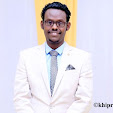An Inspiring Woman Who Built a Hospital From Selling Vegetables on Streets!
 |
| Subhasini Mistry's photos (right) selling vegetables on streets and (left)again after she built her hospital |
Subhasini Mistry was 23 years old when she lost her husband — not to an incurable disease but because she could not afford the treatment. With no proper education or economic security, she was left to fend for herself and her four children. So, she started working as a domestic help to support the ones she loved. She also vowed to build a hospital to make sure that others who could not afford treatment were not left helpless.
With that mission in mind along with the determination to make one of her children a doctor, she started working. From being a domestic help to laying bricks, she took up any work that came her way. Sometimes even her children accompanied her to work. Despite all that, she could not afford to take care of all four children and had to send two of them to an orphanage.
 |
| Humanity Hospital front ground |
With the money she had saved over the years, she bought a small plot, after which she started asking people for donations, from beds to requesting doctors to treat patients for free. Almost 50 years after she started her mission, in 1996, she had built Humanity Hospital, in a village near Kolkata, brick by brick. Talking about how she achieved this feat, to NDTV, she said,
“I went about asking them to contribute in any way they could. Some donated money, some wood, some gave the material needed for construction while some volunteered for construction work.”Just as she had desired, her younger son Ajoy is also a doctor in the hospital. In 2009, she won the Godfrey Phillips Award for bravery. This year, she was one of the women to receive the Women Transforming India Award. At present, some NRIs from London have come together to do their share for her hospital. According to The Times of India, she said,
“I have toiled hard to build this hospital, but it could not have happened without help from hundreds of Good Samaritans who have donated funds. I thank and bless these doctors from the bottom of my heart for their help.”
Source


 Any interested reader can visit the
Any interested reader can visit the  There are
There are 














